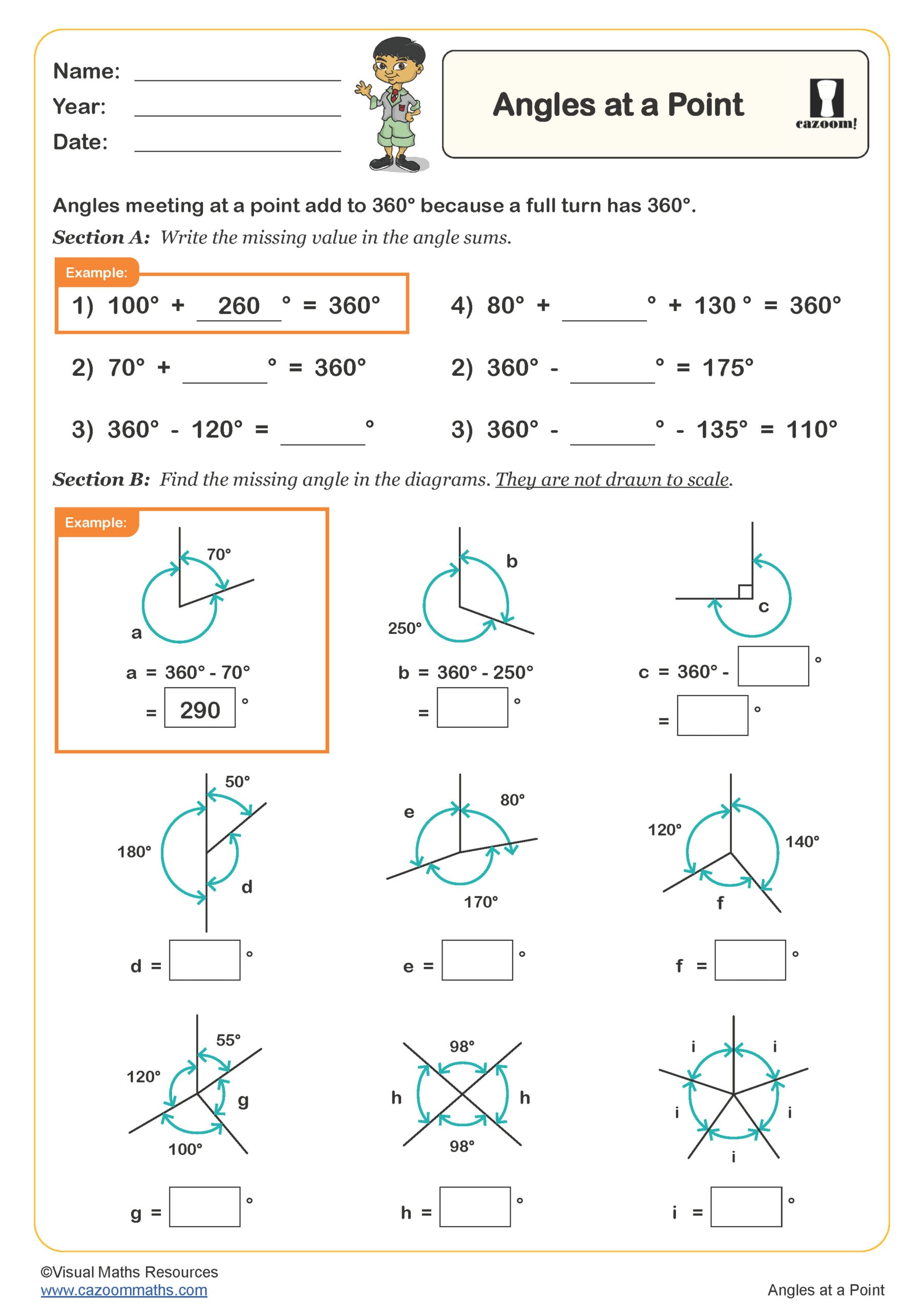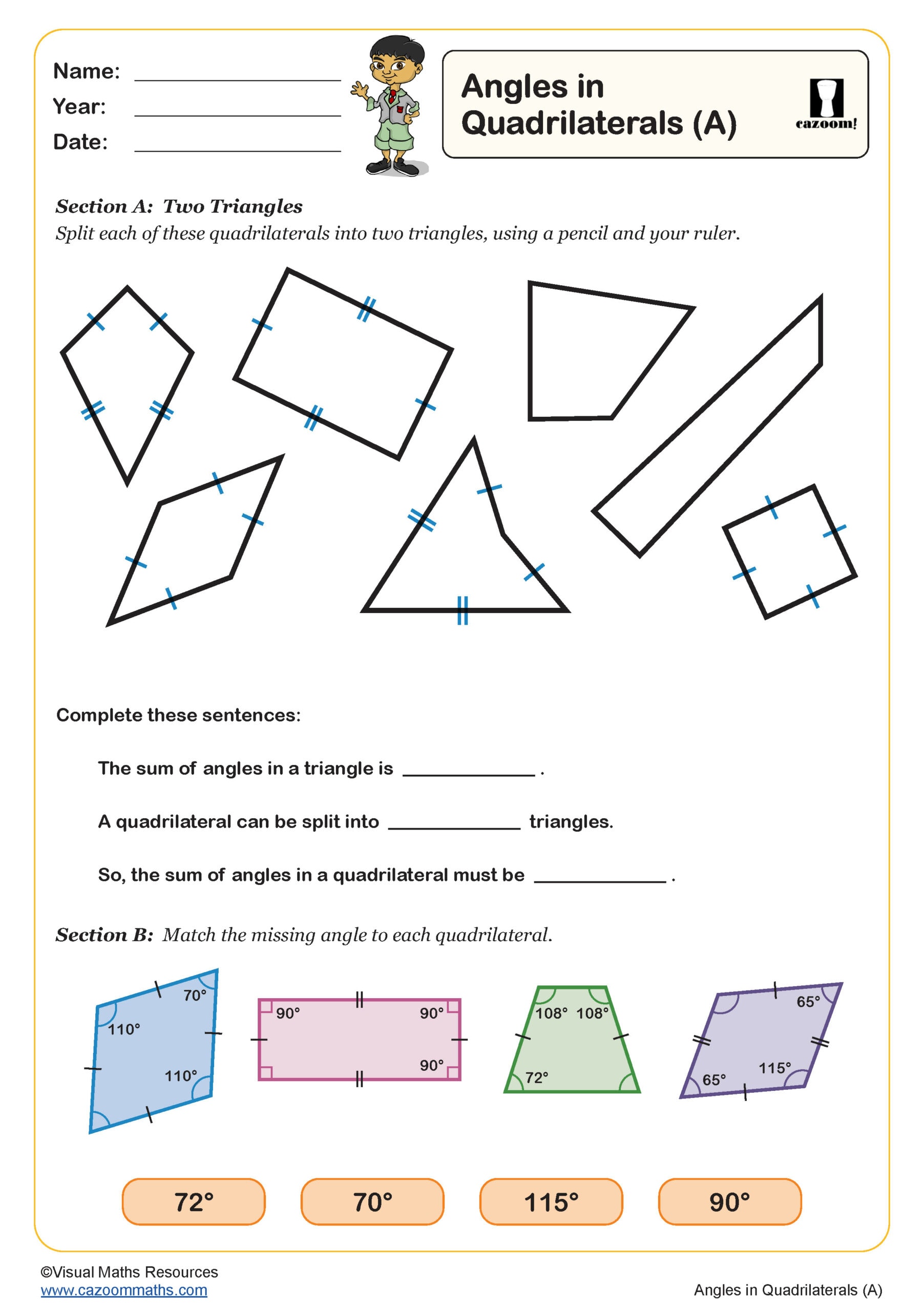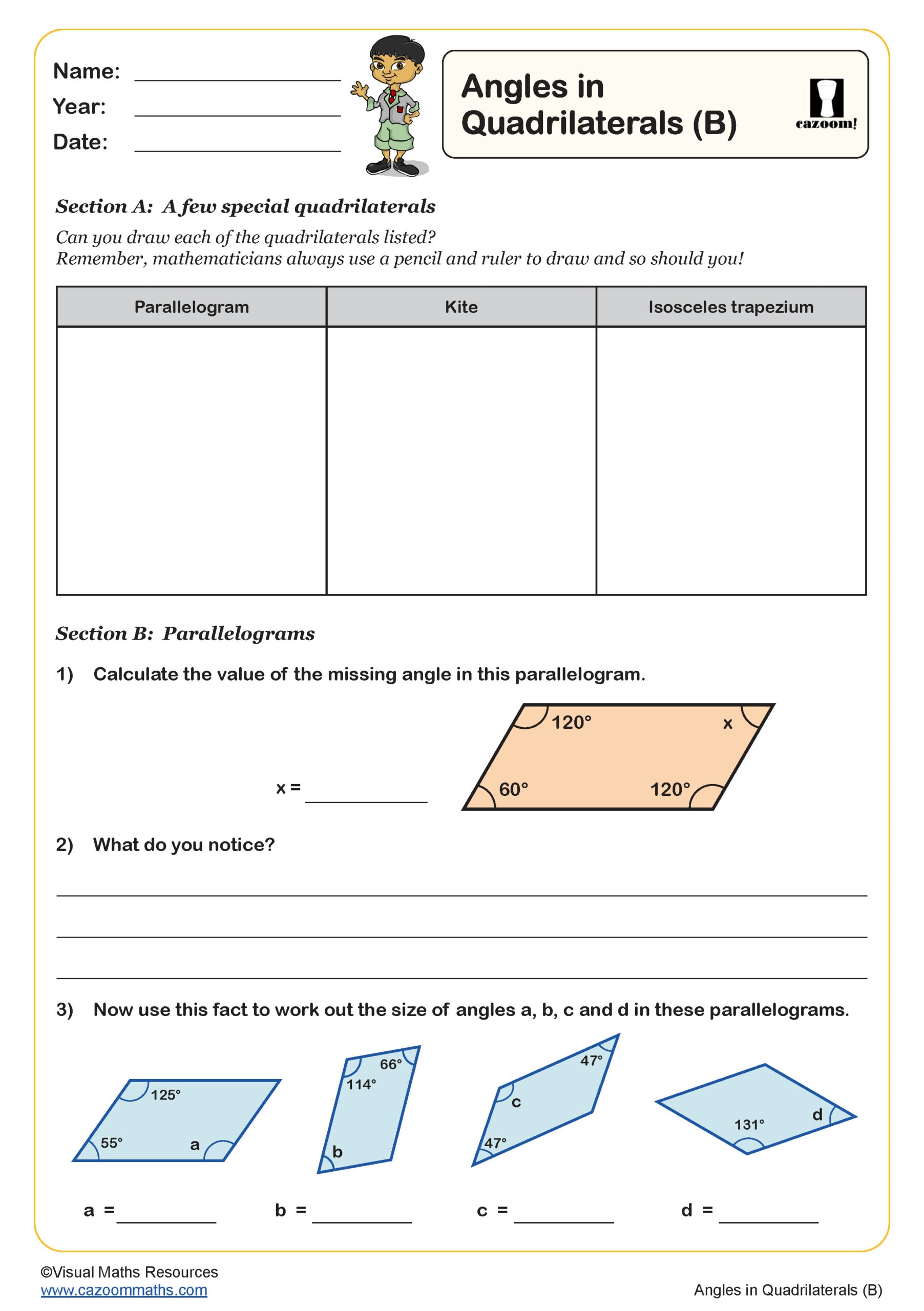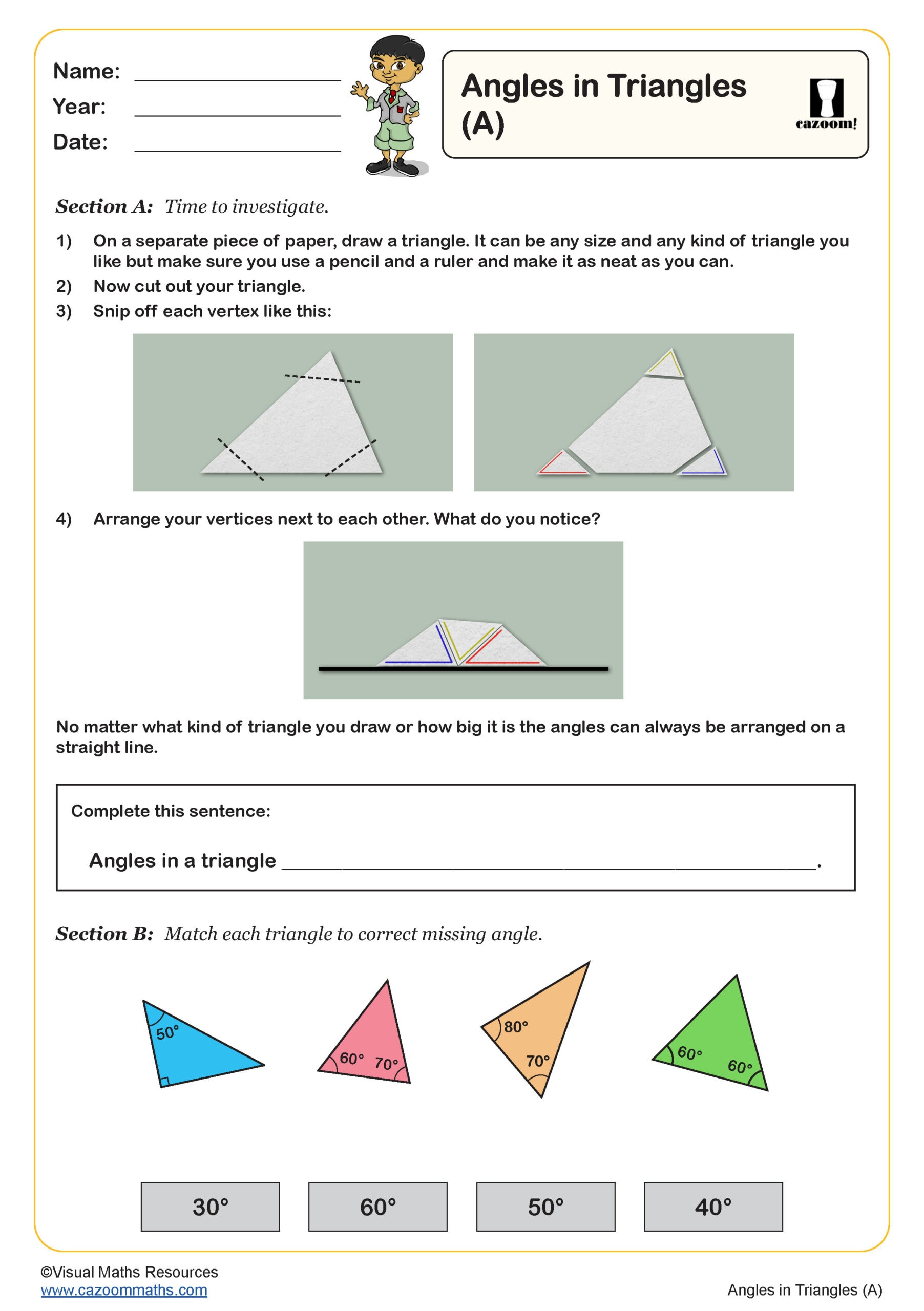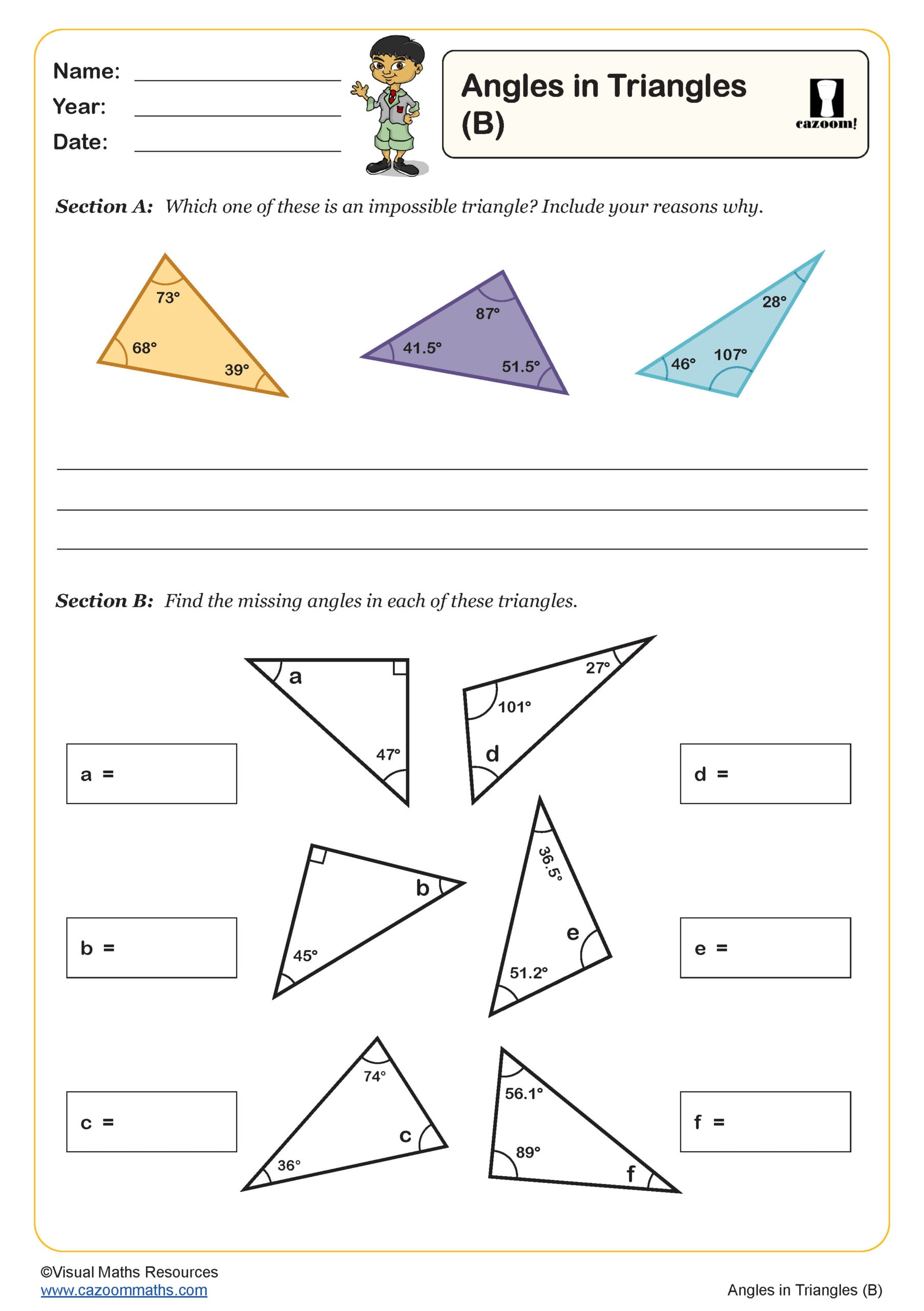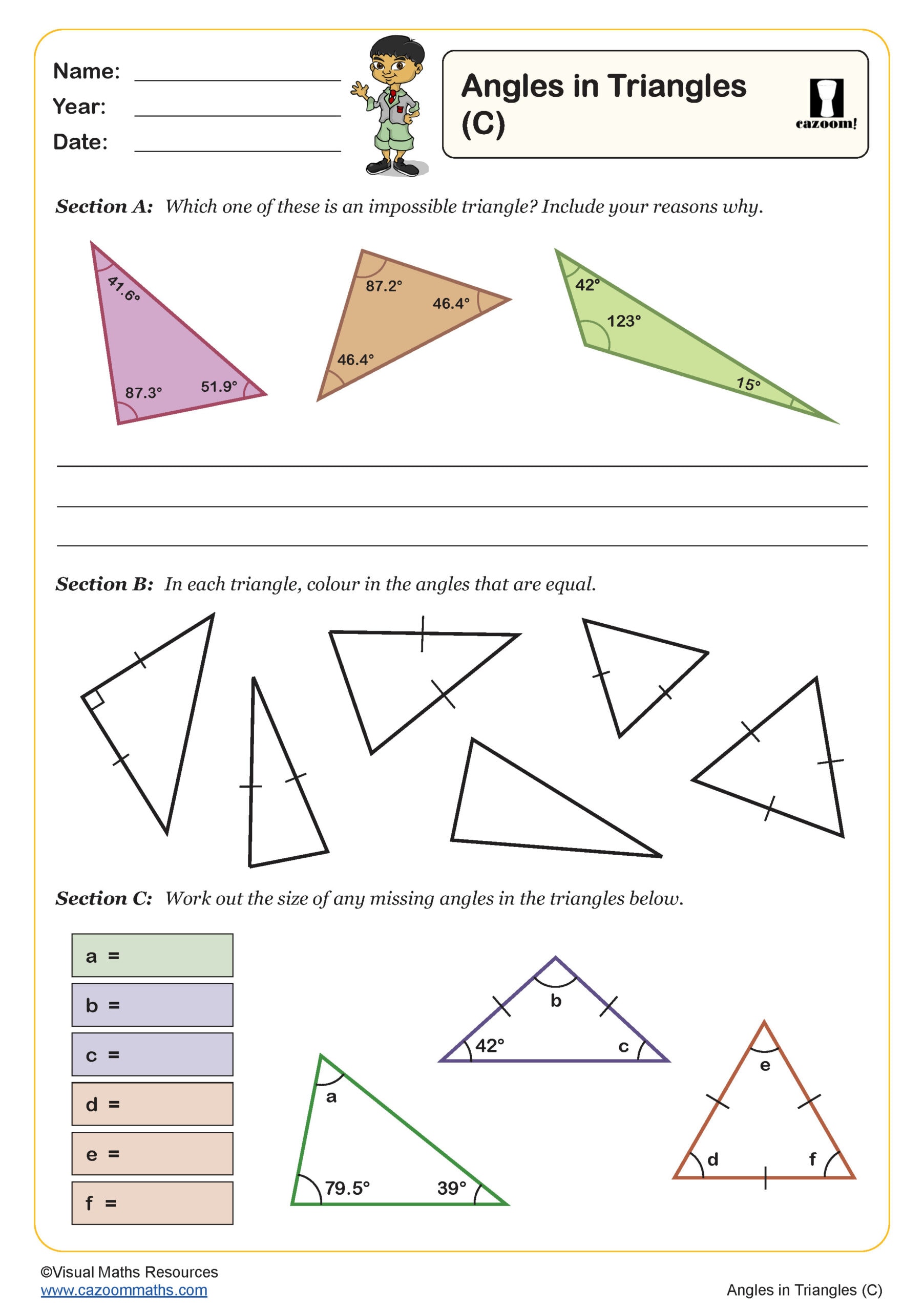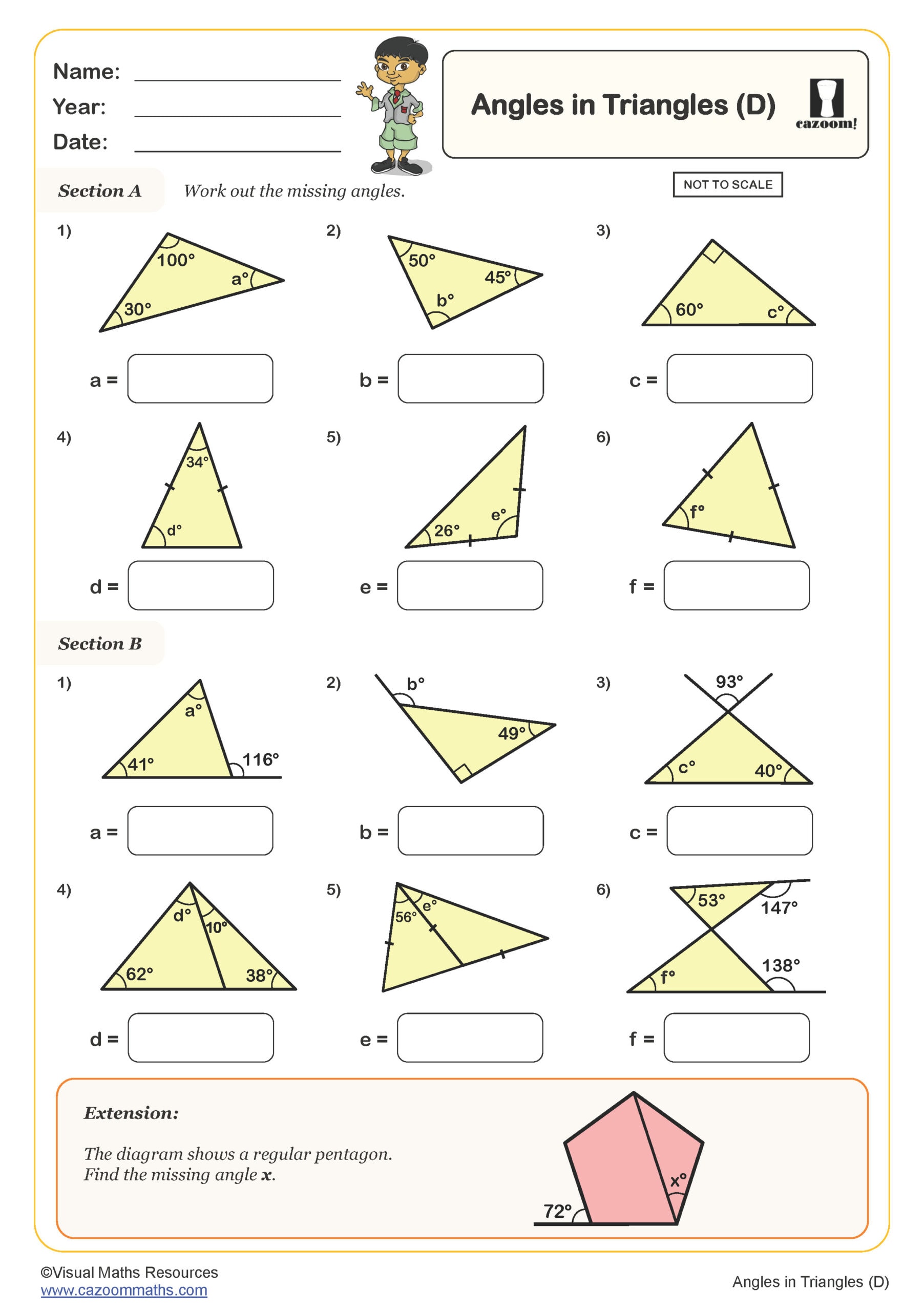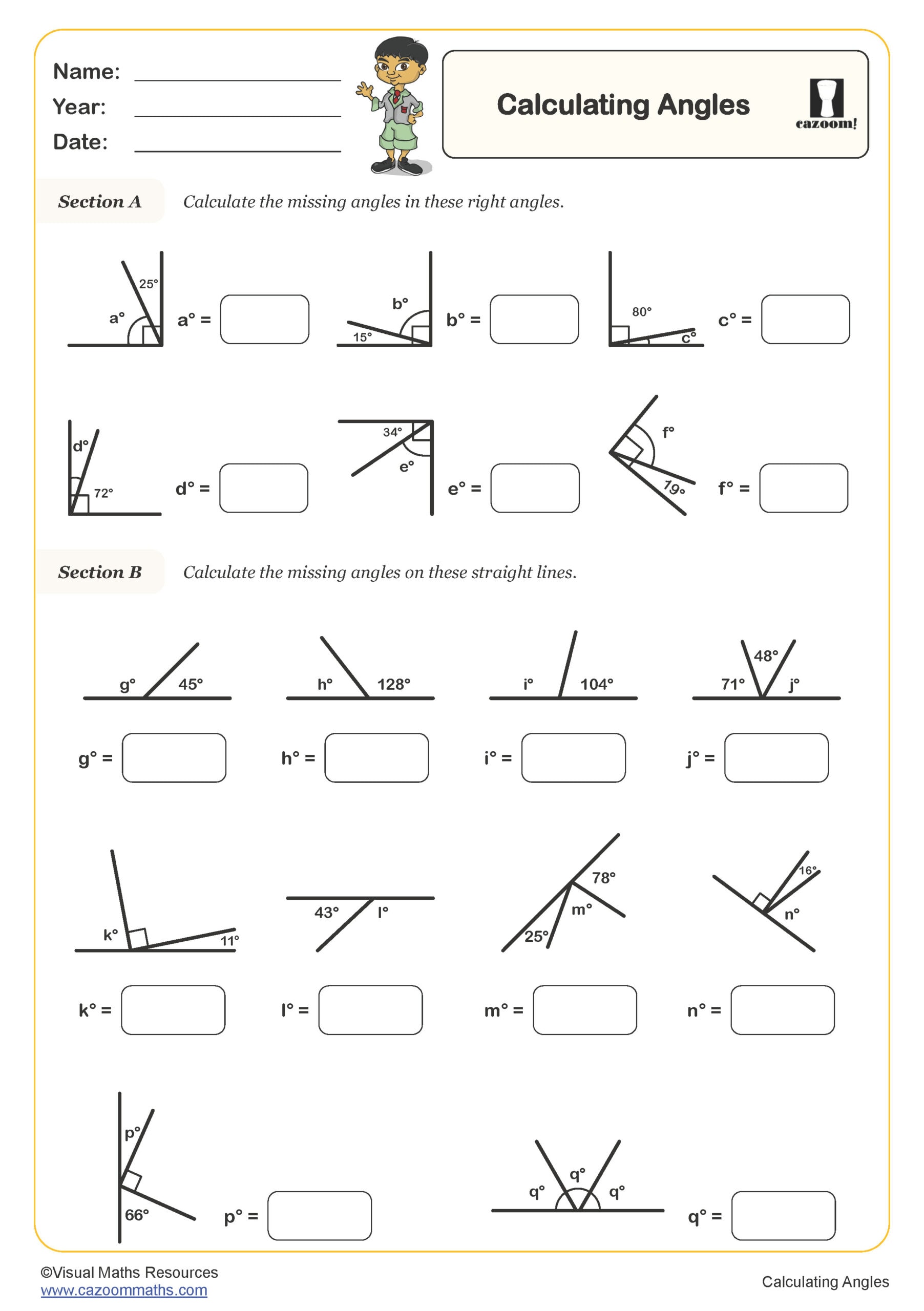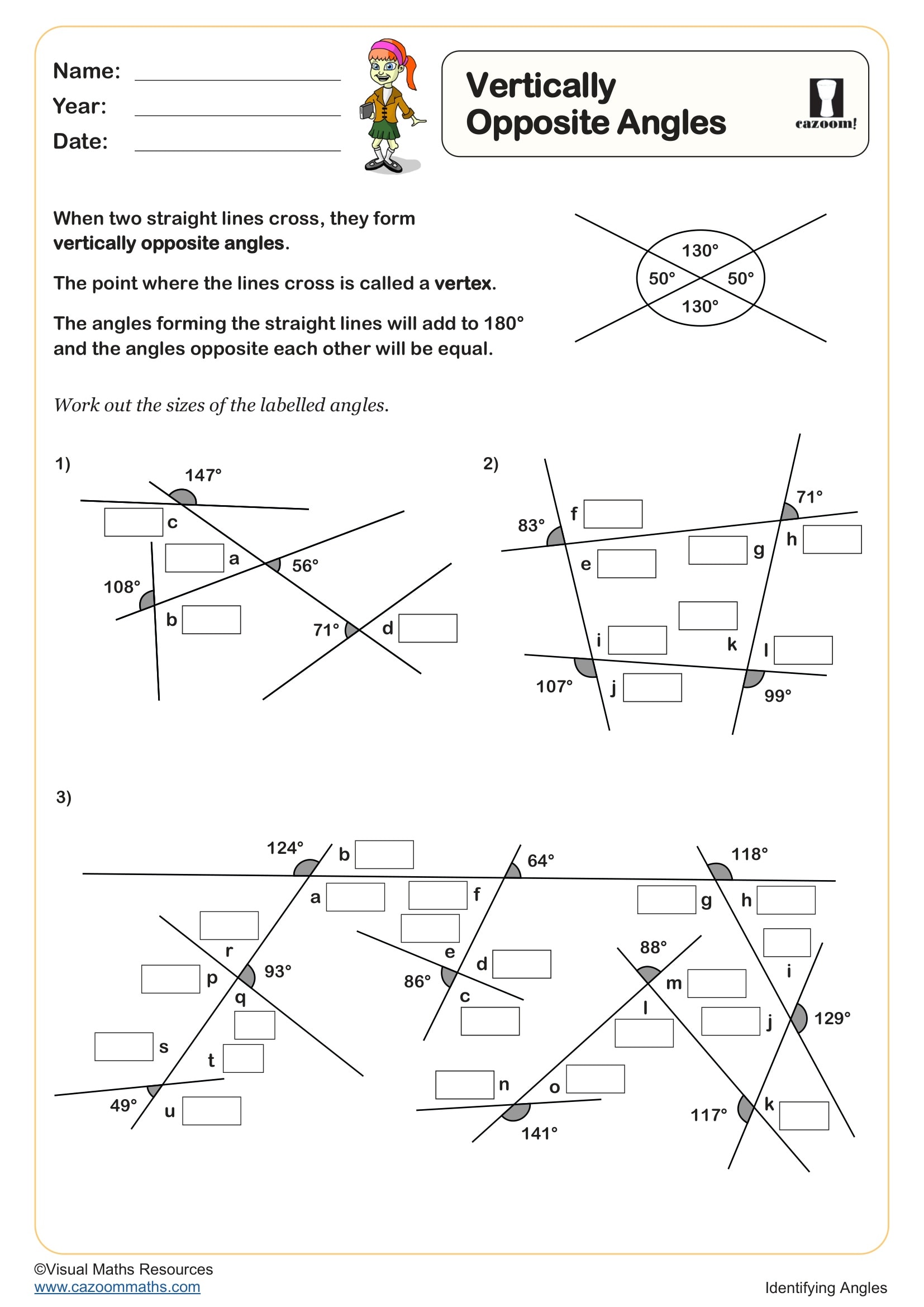Year 6 Angles Worksheets
Year 6 Measure and Classify Angles Worksheets with Answer Keys
Quality angle resources that actually challenge KS2 students without overwhelming them are really hard to find. Our Year 6 ready-to-use, printable PDF worksheets focus on the essential skills students need related to basic coordinate skills. Each worksheet comes with detailed solutions that show the complete working process, helping your primary school students understand the reasoning behind each answer.
How to Identify Different Types of Angles in Year 6 Geometry
Our expert team has included a wide variety of concepts into these angle worksheets! That will help your KS2 students progress from basic angle identification to more complex tasks like calculating angles on straight lines and around points. Let’s have a look at what are the concepts that we have included-
• Angle Relationships & Properties
• Angles in Triangles
• Angles in Quadrilaterals
• General Angle Calculations
Building Year 6 Students' Confidence with Angle Measurement Practice
Students who practice with our angle worksheets perform significantly better in geometry assessments. The visual nature of angle work means students need plenty of opportunities to develop their spatial reasoning skills. These worksheets bridge that crucial gap between understanding angle concepts and applying them confidently in SATS and classroom tests.
Key benefits our students experience:
• Improved protractor accuracy and measurement skills
• Better understanding of angle relationships in shapes
• Increased confidence with geometry problem-solving
• Stronger foundation for KS3 mathematics topics
• Enhanced spatial awareness for real-world applications
Where Year 6 Students Actually Use Angle Knowledge Daily
The basic geometry skills related to angle knowledge appear everywhere! From technology lessons, movement analysis in your favourite sport, this idea is indeed everywhere. Even in your art classes, road signs, and everyday objects around you. Inretesting, right?
Let us take some more real-world angle applications:
• Art projects - Understanding angles can help you with your art projects and you will understand how to begin with your project and make them perfect.
• PE lessons - This core geometrical concept will help you understand why footballs curve when you kick them at an angle
• Building with Lego - You must have angle knowledge for creating stable structures using angle knowledge
• Reading maps - Basic concepts related to angles are really important to compass directions
